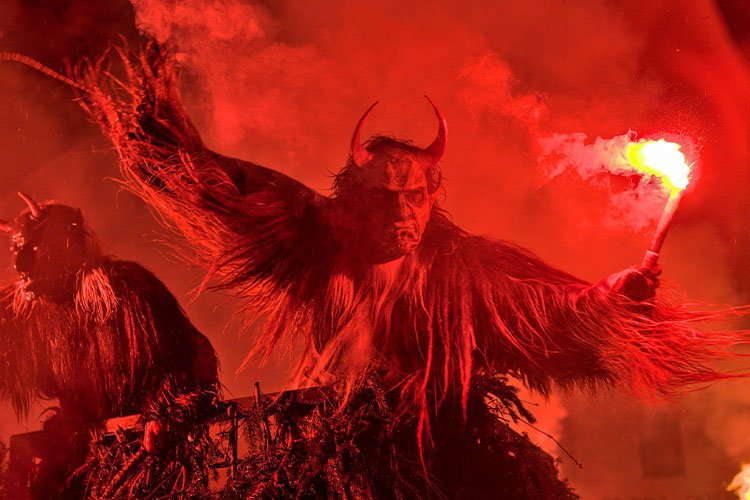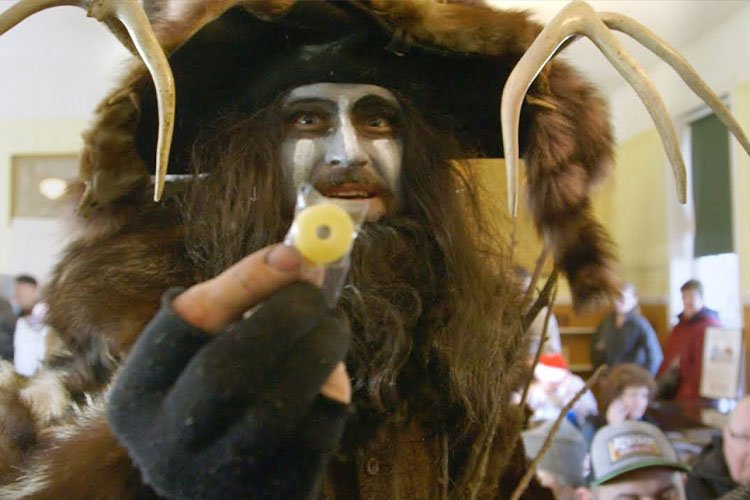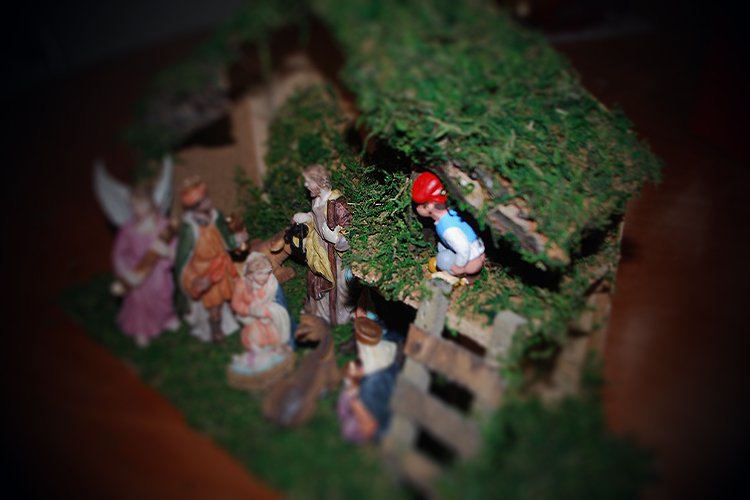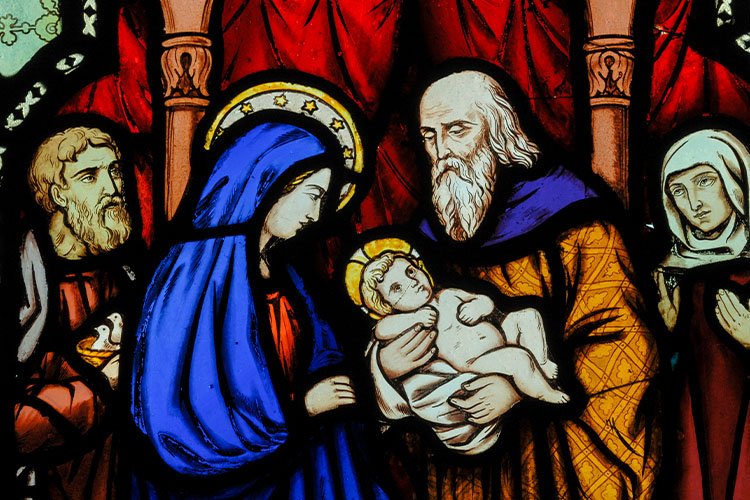There is a reason why December is called the holiday season. From the first of the month to the New Year, over a dozen religious and cultural holidays dot the December calendar.
The Christian Advent calendar dominates the holiday season, with no less than nine major and minor religious festivals, culminating with the most celebrated holiday in the world: Christmas.
However, as a whole, the holiday season enjoys some fairly consistent traditions, including spending time with family and friends, putting up decorations, and exchanging gifts. And while these may be some of the most popular, there are other ways to celebrate the season.
In fact, one can find some rather unique holiday traditions throughout history, including some bizarre decorum involving defecation or terrifying murderous beast, which in some parts of the world, are still part of the festivities today.
So without further ado, here is The Debrief’s list of some of the most mysterious, bizarre, and even terrifying Holiday traditions from across the globe.


Krampus: The Holiday Demon
If asked to name Santa Claus’ closest companions, many would likely mention tiny toy-making elves, Mrs. Claus, Rudolph, or any of Saint Nick’s other magical reindeer.
However, in southwest Germany and Austria, Saint Nicholas rolls with a terrifying posse, ready to deal out corporal punishment to those unfortunate enough to make it on the naughty list. The cohort even includes an anthropomorphic demon figure known as Krampus.
Krampus is typically described as a large hairy beast with cloven hooves, horns of a goat, claws, a long pointed tongue, and menacing fangs. The ghastly figure is often depicted wrapped in chains, which some folklorists suggest is meant to symbolize the Christian tradition of binding the Devil.
In many parts of Bavaria and Austria, the evening before the Feast of Saint Nicholas on December 6 is known as Krampusnacht or “Krampus Night.” According to Germanic folklore, this is the night that the odd couple of Saint Nicholas and Krampus roam the countryside giving out gifts or doling out punishment.
Following tradition, children in the Alpine regions leave their boots outside their doorway, hoping Saint Nicholas will fill the shoes with modest gifts such as candies or fruits if they’ve been good.
However, and this is a big however, if the children have been naughty, rather than chocolate or dried oranges, they get Krampus.
In the best-case scenario, misbehaving children can expect Krampus to deal out a savage beating using a birch rod. While this doesn’t sound fun, it is better than some other potential consequences, which include being placed in a wicker basket and kidnapped by Krampus, murdered, eaten alive, or dragged to the depths of Hell.
German historians say Krampus’ origins likely stem from ancient Alpine traditions that pre-date Christianity, although surviving records of Krampus celebrations don’t emerge until the 6th or 7th century CE.
Krampus largely faded into obscurity in the early 20th century. However, largely thanks to the macabre novelty of a holiday demon, Santa’s punisher has seen a resurgence in popularity in the last few decades.
Today, many areas of southwest Germany and Austria, especially the alpine villages around Salzburg and Tyrol, host Krampus celebrations, including parades featuring revelers dressed as the half-goat creature.
The threat of Krampus suddenly makes getting coal in your stocking not sound so bad anymore.


Belsnickel: Keeping Up The Holiday Tradition of Ass Kicking
Just because you’ve successfully made it through the Feast of Saint Nicholas without getting beaten, kidnapped, or murdered by Krampus doesn’t mean you’re out of the woods. Especially for those living in Germany’s southern Palatinate region, who now run the risk of facing Belsnickel.
Belsnickel is another of Saint Nicholas’ lesser-known cohorts, described as a breaded, crotchety old man dressed in furs and tattered clothes.
For the good boys and girls along the Rhine, Saarland, and Baden-Wurttemberg regions of Germany, Belsnickel brings modest gifts or candy. However, if you’ve been naughty, Belsnickel is bringing, you guessed it, an ass whipping.
According to tradition, Belsnickel travels alone, visiting children’s homes one to two weeks before Christmas. Dressed like a 17th-century fur trader, Belsnickel knocks on a home’s window, asking to be let inside. Once inside, he will quiz the children about their behavior throughout the year or ask questions about the Bible.
After finishing these tasks, Belsnickel throws cakes, candies, or other small gifts on the floor. Should the children dive too quickly for the treats or be dishonest about their behavior, Belsnickel responds by laying a smackdown on the greedy and lying children with a birch rod.
Belsnickel closely resembles several other companions of Saint Nicholas found in regions of the former Holy Roman Empire, such as Knecht Ruprecht, or “Servant Rupert” in English.
Jacob Grimm- one half of the famous folklorists and literary duo the Brothers Grimm – said Belsnickel and other foils to the benevolent Saint Nicholas likely originated from pre-Christian beliefs in house spirits or house elves.
Many folklorists say the belief in house elves, which turned into the gift-giving Belsnickel, has since evolved into the Christmas elf of modern American folklore.
And though he may not be as well known as Krampus, the grumpy gift-giver and disciplinarian has a surprisingly large following in Pennsylvania, where German immigrants in the early 19th century brought the holiday tradition with them.
Belsnickel also successfully made his way into pop culture on the hit TV show The Office. In the season 9 episode, A Dwight Christmas, everyone’s favorite awkward character Dwight Shrute judges his co-worker’s past behavior while dressed up as Belsnickel for the office holiday party.
“That’s my favorite part of Christmas. The authority,” remarks the always sardonic but loveable character Jim Halpert. Adds his fictional wife Pam Beesly, “Yes. And the fear.”


El Caganer: The Holiday Pooper
Sure, threats of being beaten by a sadistic Belsnickel or mauled by a demonic Krampus don’t sound like a fun-filled holiday tradition. Yet, head southwest from Germany to the Spanish autonomous community of Catalonia, and things start to get really shitty. Literally.
In nativity scenes in Catalonia, along with some areas of Spain, Portugal, and southern Italy, one can typically find a figurine of a peasant wearing a traditional red Catalan cap, pants around his ankles, butt hanging out, and engaged in the act of defecation, known as “El Caganer.”
In Catalan, “El Caganer” translates directly to “the pooper” or “the shitter.”
To clarify, you’re not misreading anything. The El Caganer holiday tradition involves staging a statuette dropping a deuce in the nativity scene alongside baby Jesus, Mary, Joseph, and the three wise men.
In fairness, El Caganer is usually tucked away in a corner and not spoiling the typically idyllic representation of the Immaculate Birth. In some areas of Catalonia, the custom is to hide the El Caganer and have children try to find him.
The tradition of the El Caganer has existed since at least the 18th century and eminent Catalan ethnologist and folklorist, Joan Amades, described it as an “essential piece” of Catalan culture and “the most popular figure of the nativity scene.”
Remarkably, however, no one can agree on how this “essential piece” of the nativity scene came into existence or precisely what it symbolizes.
According to Amades, El Caganer arrived in the mid-century as a symbol of fertilizing the ground around the nativity scene, ensuring the display would bring about health and happiness in the following year. “Placing this figurine in the nativity scene brought good luck and joy, and not doing so brought adversity,” said Amades.
Some historians and anthropologists have suggested that El Caganer was born in protest and as a way for Catalans to respond to contemporary social issues. To this latter point, modern Caganer figurines can often depict a celebrity or world leader in the act of pooping.
And while this may sound strange to some, believe it or not, El Caganer isn’t the only holiday tradition involving poop.


Tio de Nadal: The Holiday Poop Log
If you weren’t aware of El Caganer, you almost assuredly didn’t know that Catalonia doesn’t have one but two holiday traditions involving poop.
In many Catalan homes during the holiday season, one will find a roughly foot-long hollow log, standing up on two or four stick legs, with a broad smiling face on one end called Tio de Nadal, or the “Christmas Log.”
Tio is also popularly known as “Caga Tio,” which in English translates to “poop log” or “shit log.”
According to Catalan tradition, beginning with the Catholic Feast of the Immaculate Conception on December 8, children must take care of Tio de Nadal by feeding and covering the log with a blanket so it won’t get cold. This ritual continues until Christmas eve, when the time has come for the poop log to reward its caregivers.
On Christmas eve, children will beat Tio de Nadal with sticks while singing the “Caga Tio” song. There are several variations of the Caga Tio song. However, one of the most popular versions is too delightful not to translate to English and share.
Shit, Tio!
Hazelnuts and nougats,
Do not shit herring,
They are too salty,
Shit nougats,
They Taste Better.
Shit Tio,
Almonds and nougats,
And if you don’t want to shit
I will hit you with a stick!
Shit, Tio!
After beating Tio, the log will “poop” small gifts from its rear section, which is concealed underneath a blanket. Typical offerings pooped out by Tio are candies, nuts, small toys, or a nougat confection called a Turron. Larger presents are typically brought by the Three Wise Men or Santa Claus.
Like El Caganer, the origin of Tio de Nadal is a mystery. However, the holiday tradition goes back centuries in Catalonia and other parts of southern Europe.
So while naughty children in southern Germany and Austria run the risk of being beaten by a demon or crotchety old man, kids in Catalonia get to literally beat the shit out of a log.


The Lord of Misrule: A Tradition in Need of Revival
If we ever wanted to revive an archaic holiday tradition, the Lord of Misrule might be a good one to consider.
In England’s late medieval and early Tudor periods, it was common practice for the royal court to appoint a temporary officer called the Lord of Misrule during the holiday season.
Usually, a peasant who was selected by random lottery, the Lord of Misrule was responsible for arranging and directing all Christmas festivities for the royal court, the homes of great noblemen, and the Inns of Court.
These holiday celebrations could include elaborate masques, parades, plays, large feasts, or mock courts presided over by the Lord of Misrule. However, the revelry’s central theme was always excessive drunkenness and wild partying.
Lord of Misrule’s reign could last anywhere from 12 days to 3 months, typically culminating with their presiding over the Feast of Fools on January 1.
Appointing a plebeian party planner for the holidays was similarly practiced in Scotland with the Abbot of Unreason and in France with the Prince de Sots, or “Prince of Fools.” The Church of England even had a variation of the custom with the “Boy Bishop.”
Some folklorists suggest the Lord of Misrule descended from a similar custom practiced in ancient Rome during the celebration of Saturnalia. Celebrated from December 17-23, it was common practice in ancient Rome for a commoner to be chosen to be a mock king to preside over the feast of Saturnalia in the guise of the Roman deity Saturn.
Others, like influential English historian and expert on ancient Roman religion William Wade Fowler, argue the Christian era Lord of Misrule and Saturnalia customs have distinctly separate origins.
Regardless of how it began, the practice of appointing a Lord of Misrule was abolished by King Henry VIII in 1541. Odd, considering one of England’s most famous monarchs was never one to shy away from a good party.
A little over a decade later, the custom was restored by Queen Mary I, only to be once again abolished by Queen Elizabeth I a few years later.
Today, Christmas is typically celebrated in the manner ushered in by the 19th-century Anglican Church and influential Victorian-era authors like Charles Dickens. Emphasizing the holiday as a time for family, religion, gift-giving, and social reconciliation.
However, believe it or not, a couple of hundred years ago, in 17th century Puritan England, Christmas was banned because it was considered a day associated with being one big drunken orgy, complete with its own Lord of Misrule.


Jesus Maybe Wasn’t Born on December 25
If you were to ask, “What day was Jesus born?” Many would likely answer December 25. This is the day most widely observed as Christmas, a festival inherently established to commemorate Jesus’ birth. By all accounts, this answer makes total sense.
However, according to many religious scholars, this answer is likely wrong.
The Bible doesn’t say when Jesus was born or what time of year Mary gave birth to him in Bethlehem. There are, however, a few details from the Scripture that scholars say suggest Jesus wasn’t born in the winter, much less on December 25.
Clues can be found in the Gospel of Luke, which discusses Jesus’ birth.
The Gospel notes that Jesus’ parents, Mary and Joseph, traveled to Bethlehem to register in a Roman census. A prevailing opinion is this was the Census of Quirinius, ordered by the governor of Roman Syria, Publius Sulpicius Quirinius, in 6 AD. However, this is not without contention, and some say it could have been another census before Quirinius, held under the Roman consul Gaius Sentius Saturninus.
Regardless, most scholars generally agree that Rome would not have held a census during the winter months, during freezing temperatures and poor road conditions.
The Gospel of Luke also discusses shepherds watching over their flocks the night Jesus was born. Because of the cold and rainy winter weather in Judea, scholars say it is doubtful that shepherds would have been out in the fields and their flocks would have been corralled in December.
That said, many religious scholars also urge caution in using incidental details from a 2,000-year-old narrative that’s primary focus is theological to extract such precise detail as Jesus’ birthday.
Nevertheless, early Christian theologians were very interested in determining the exact date of Jesus’ birth. First-century philosopher Clement of Alexandria noted that some claimed Jesus had been born on May 20, while others said it was April 21.
The oldest source linking December 25 to Christmas is a third-century book by Hippolytus of Rome.
At the time, there was a widely held Christian belief that the great prophets were conceived into the afterlife on the same date they were conceived into the world. Using March 25 as the date for Jesus’ crucifixion and therefore theorized conception, Hippolytus counted up nine months, arriving at December 25 as the day Jesus was born.
Another explanation argued by some historians is that early Christians co-opted existing pagan holidays celebrating the winter solstice, which occurs around December 21-22 in the Northern Hemisphere.
The Roman celebration Saturnalia has been named a potential progenitor for the December 25 Christmas holiday. Honoring the Roman god Saturn, the festival included many later traditions associated with Christmas, including gift-giving and carnivals. However, Saturnalia was held from December 17-23, not December 25.
There was a Roman holiday that fell on December 25, Natalis Solis Invicti. However, there is no evidence this holiday was celebrated before the mid-4th century after early Christians had already declared the 25th as the day of Jesus’ birth.
Historian William Tighe has called the popularized notion that Christmas has pagan roots “a myth without historical substance.”
So to the question of whether Jesus was born on December 25, the answer is probably not… Well, maybe… Truthfully, nobody knows.
So while this isn’t a bizarre or terrifying holiday custom, it is the most widely followed holiday tradition on our list based on a mystery.
But let’s be honest. The historical ambiguity of Jesus’ birthday seems tame compared to other holiday traditions, like a half-goat demon, abusive old man, or pooping log.
Tim McMillan is a retired law enforcement executive, investigative reporter and co-founder of The Debrief. His writing typically focuses on defense, national security, and the Intelligence Community. You can follow Tim on Twitter: @LtTimMcMillan. Tim can be reached by email: tim@thedebrief.org or through encrypted email: LtTimMcMillan@protonmail.com

